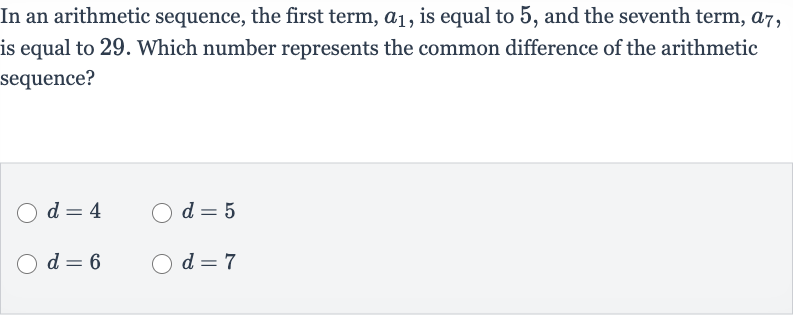Full solution
Q. In an arithmetic sequence, the first term, , is equal to , and the seventh term, , is equal to . Which number represents the common difference of the arithmetic sequence?
- Given terms: We are given the first term of an arithmetic sequence and the seventh term . We need to find the common difference . The formula for the nth term of an arithmetic sequence is .
- Express seventh term: We can use the formula to express the seventh term in terms of the first term and the common difference: .
- Substitute values: Substitute the given values into the equation: .
- Solve for d: Now, solve for d: .
- Simplify equation: Simplify the equation: .
- Divide by : Divide both sides by to find : .
- Calculate d: Calculate the value of d: .

